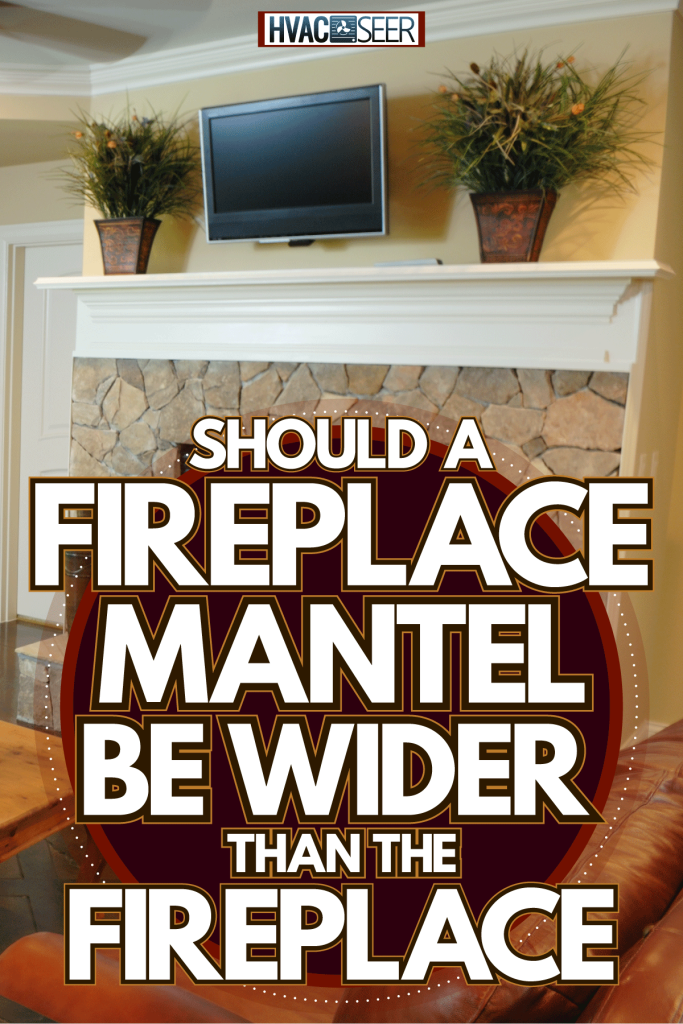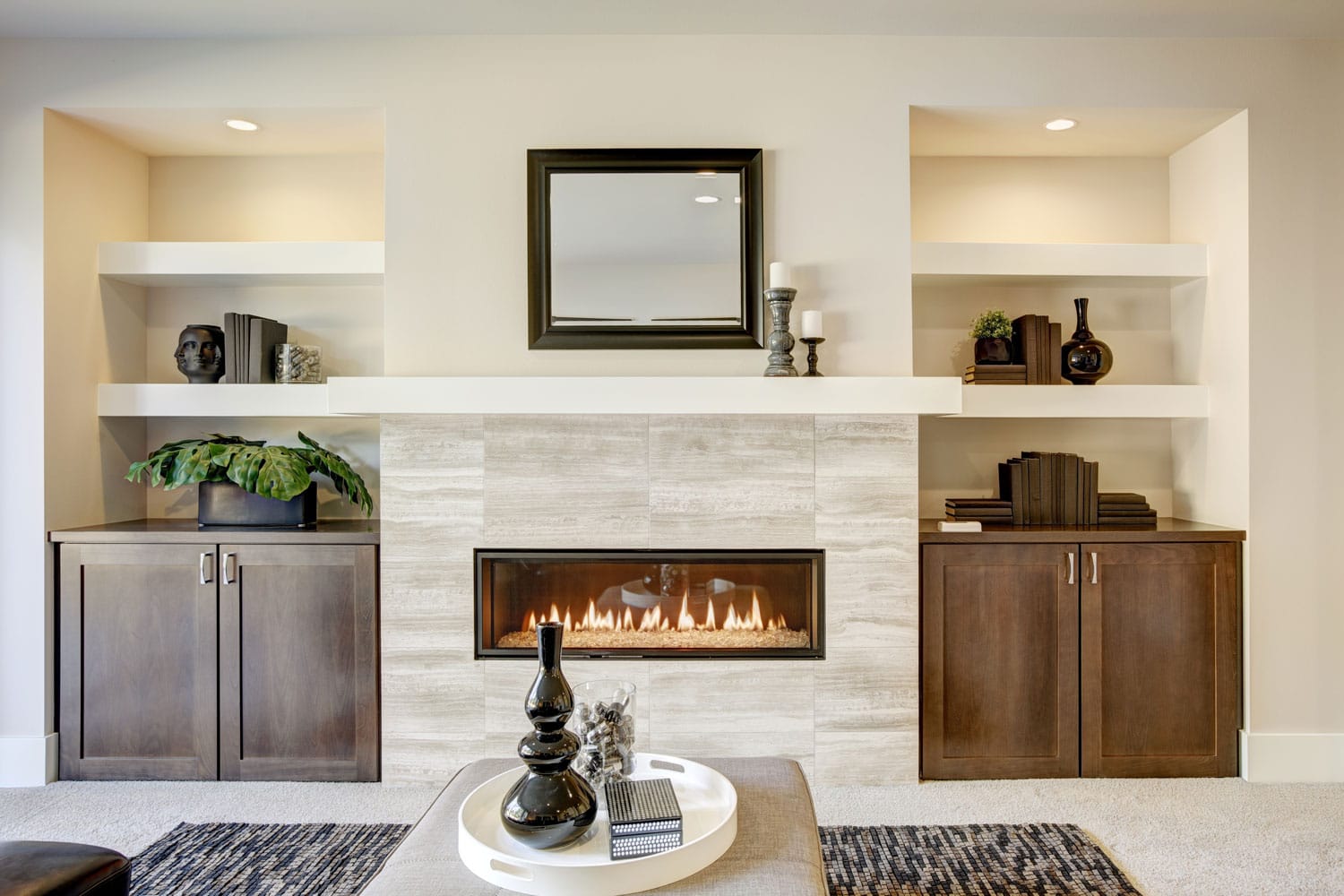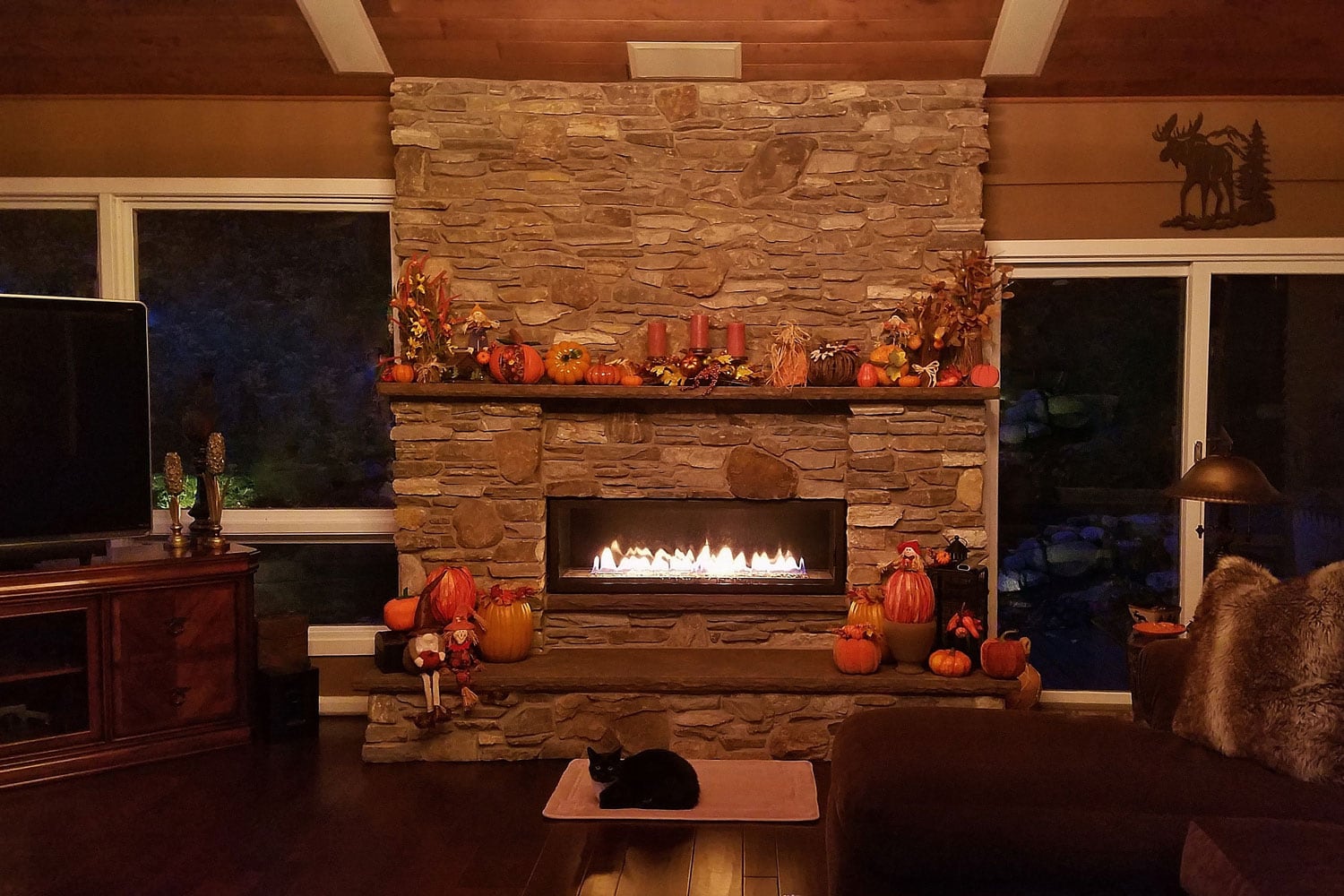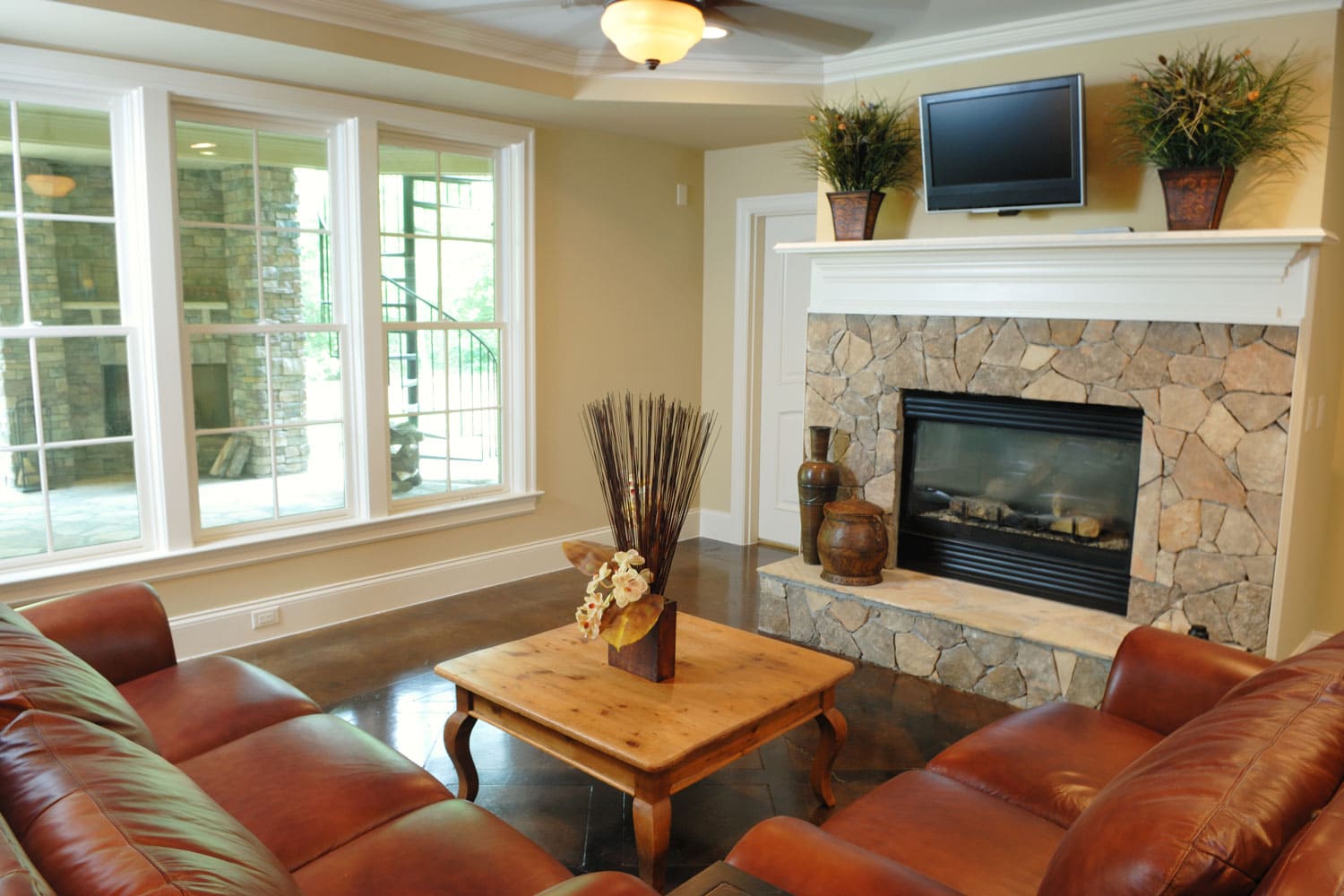The fireplace and the fireplace mantel go hand in hand and become the focal point of the room. The mantel size is important to bring out the beauty of the fireplace, but what is the ideal size? We have done the research to bring you the information you need.
For the fireplace mantel to look aesthetically pleasing, it should be wider than the fireplace by at least 3 inches on each side. Most homes though have a mantel span of 6 to 12 inches past each side.
The width should be at least the same as the fireplace to achieve an asymmetrical look, but it should never be shorter.
To accentuate the beauty of the fireplace mantel, it is not only the fireplace that you need to consider. Keep reading as we will discuss these elements in detail and how they can be combined to achieve a cohesive overall design for your living space.

Factors That Affect Mantel Length
With the end view to achieving balance among your home's interior, the fireplace mantel can serve as the centerpiece. The mantel should be at least 3 inches beyond each side of the fireplace. But on average, most homes have a 6- to 12-inch mantel span past each side of the fireplace.

The fireplace mantel serves as the protective hood to deflect heat coming from the hearth underneath. The above mantel length is sufficient to perform its purpose without reducing its aesthetic appeal.
There are other factors that you need to consider in deciding mantel length. Let's look at the most important:
Dimensions of the Firebox

Determining the dimensions of your firebox will give you a clear idea to gauge the span of your mantel. There is no absolute rule for its length though. Just bear in mind that it should cover the width of the firebox at a minimum.
However, a wide and long mantel can stand out even better depending on the available space.
Some homes have more expansive fireplace mantels, even getting beyond the average of 12 inches at each side of the fireplace. Materials that span the entire wall have become getting common, depending on the aesthetic preferences of the homeowner.
Materials Surrounding the Firebox
The materials surrounding the fireplace are accents that give it a framed look. They should be fireproof for safety and functionality, while at the same time for decorative and aesthetic purposes. These could include bricks, tiles, wood planks, and stone masonry.
The mantel should never be shorter or narrower in span than the fireplace surround else it will look awkward and unproportioned. And much more, it loses its main function which is to contain the flame sparks and heat coming out from the hearth.
Make sure that the length of the mantel should be the same, at the least, or more than the fireplace surround.
Size of the Hearth
The hearth is the floor area of your fireplace. Not all fireplaces are designed with a hearth underneath. The rule of thumb is that the mantel length should be the same or less than the width of the hearth.
For homes with an exceptionally large hearth, a narrow mantel could make a bold statement. A long mantel that exceeds the width may not look pleasing. Thus, the better options would be either the narrow span or the same width as the hearth.
Fireplace Location on the Wall

You need to consider the positioning of the fireplace with respect to the wall it is attached to. If it is centered on a flat wall, a wall-to-wall mantel will look appropriate.
If the fireplace is in a protruding wall, such as in the photo above, a wall-to-wall span or a bit short than the protruding wall could also be visually pleasing.
Size of the Room
You need to take special attention to the wall where the fireplace is located and the positioning of the doors and windows. Also, the placement of the surrounding furniture and fixtures should be noted. In all, you need to consider the overall layout and design theme of the room.
Long mantels may look good and appropriate in wide rooms. It will highlight the fireplace and will not look small and miniature. While in small rooms, the mantel should be proportionately sized in length to make it look appealing.
How to Size a Fireplace Mantel
In planning your fireplace mantel, there are three important measurements needed for proper sizing. We list them down below:
Depth
The depth of the mantel is measured from the back edge up to the face. It acts as the shelf to hold the decors. It should not be too deep that it will trap the heat from the fireplace underneath.
Width
The width of the mantel is measured from the farthest end up to the opposite end. This is the longest measurement and may extend wall-to-wall, or the shortest which should be the same as the width of the firebox.
Height
The height of the mantel is measured by the thickness of the mantel. It is measured from the top edge up to the bottom edge. The height may also refer to the vertical clearance of the mantel from the floor or ceiling, or from the top edge of the fireplace.
To learn more about the details of mantel sizing, check out this post:
How High Should A Fireplace Mantel Be?
Extending a Fireplace Mantel

You might consider converting your fireplace mantel into a floating shelf. This is because the standard mantel depth of 6 inches is not enough for your planned decors. If you are planning to install a TV, a metallic chrome mirror, or other heavy objects, you may need to extend your existing mantel.
Extending the fireplace mantel gives you additional space above the fireplace. You also need to consider the additional weight your extension should carry.
How to extend an existing mantel
Typically, wood planks are used for mantel extension. The extension should be sturdy enough to support the base of the TV and other heavy decors you may later. You still need to ensure that the extended depth will look proportionate to the pilasters and the firebox.
To extend your existing mantel, ensure that it is screwed properly to make it stable and sustain the weight of any objects and decor placed on top of it.
You would need a wood plyboard with a width and depth to carry the additional weight and dimensions. In effect, the existing mantel will serve to support the extension you are going to create.
To learn more about how to place a TV over your fireplace, check out this post:
How Much Space Do You Need Between Electric Fireplace and TV?
How to Attach a Floating Mantel
A floating mantel can make a perfect accent for your fireplace. It can be a shelf or a decorative platform that you can neatly arrange your decorations on top of it.
Most floating mantels are made of wood that can be attached to the wall. A wooden beam is sturdy, needs considerable support, and requires two people to install it properly. The video below demonstrates the steps to install the wooden beam on a wall.
Here are the steps to do it yourself:
Determine the mantel sizing
You need to determine the correct width, depth, and face height or thickness of your wooden mantel. Afterward, cut or secure a wooden beam that conforms to your intended measurements.
Blot the specific wall points where you will attach the mantel
You need to determine the correct height of the mantel. Take measurements from the floor, the top edge of the fireplace, and the ceiling height. Then you need to mark points at the wall that run along the length of the fireplace.
Drill holes in the wall to establish support to the attached mantel
If you are mounting on a brick or stone masonry, drill the wall marks with a masonry drill bit. Insert lag shield anchors into the holes and screw in lag bolts. Then, cut the heads off of the lag bolts.
Check out this lag bolt on Amazon
Check out this lag shield anchor on Amazon
If you are mounting on wood, locate the wall studs. With a wood drill bit, secure at least two lag bolts to the studs. Use wall anchors for support.
Drill holes at the mantel.
With a wood drill bit, drill holes at the wood beam deep enough for the bolts. Be sure to take precise measurements as these holes should be aligned with the lag bolts.
Check out these drill bits on Amazon
Hang the mantel.
Hold the beam and firmly push through the lag bolts. Use a hammer if needed. Ensure that the holes at the wall are aligned with the holes in the wooden beam. Ensure the support anchors are secured firmly in place.
Caulk the seams.
For a flawless finish, caulk the edges and joined surfaces. Leave it to dry completely.
Final Thoughts
The fireplace mantel should be wider than the fireplace by at least 3 inches on each side. Most homes extend the width by 12 inches and even beyond on each side.
While there is no iron rule of design for your mantel, the choices entirely depend on the overall theme of your living space, the fireplace design, and your personal preferences. Always bear in mind that a perfectly designed mantel can bring out the best look of your fireplace.
You can also create an extension of your existing mantel or install a floating mantel. Nevertheless, always consider its proper sizing as to height, depth, width, and carrying capacity to bear the weight of your TV and other intended decors.




